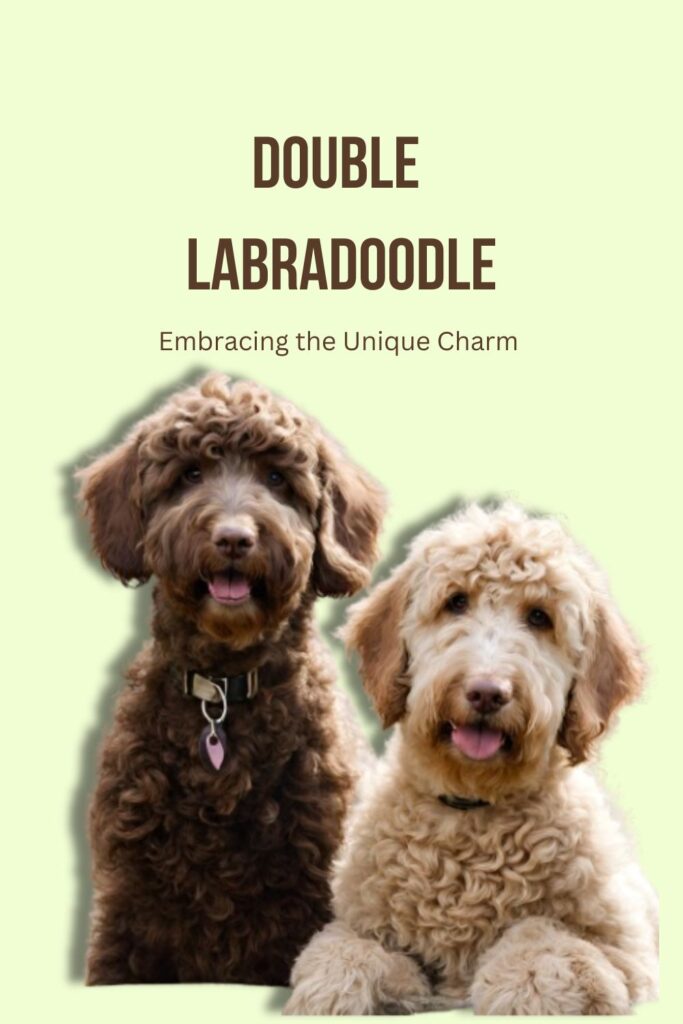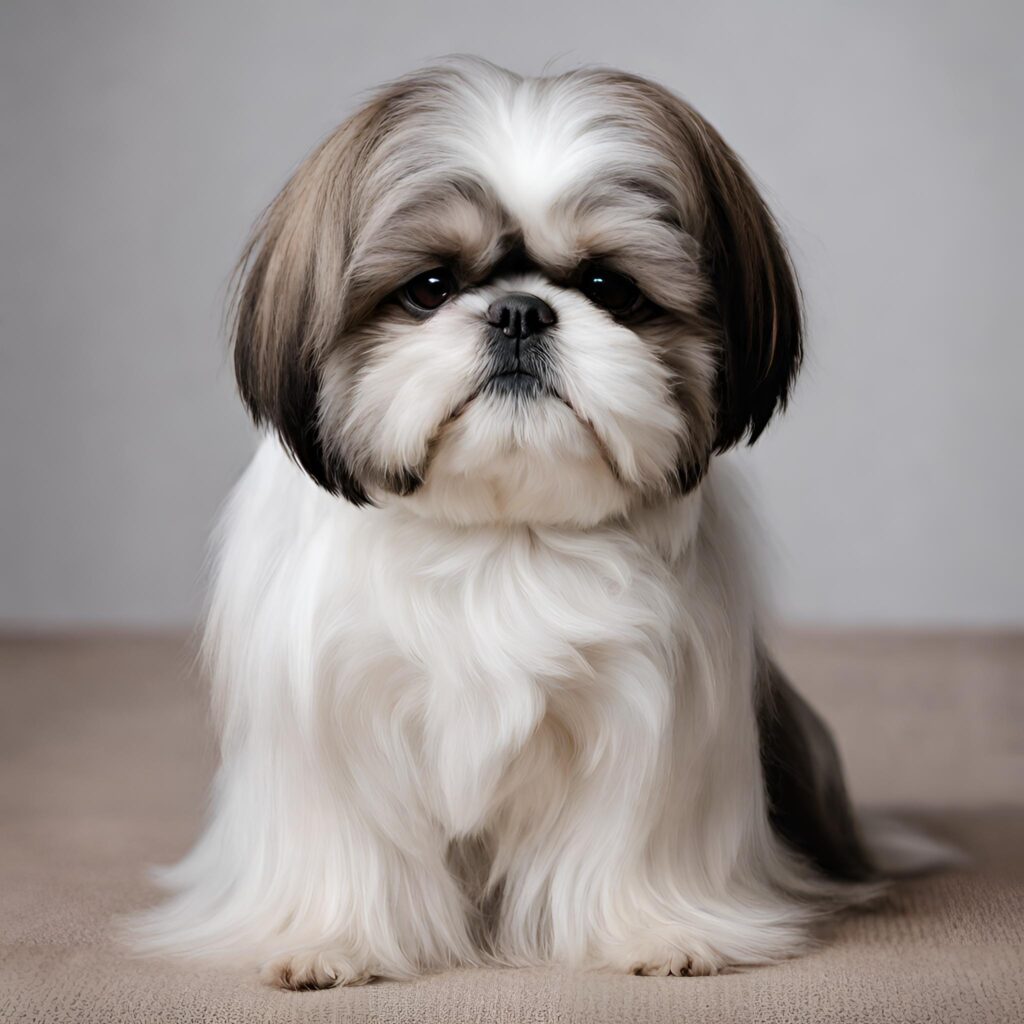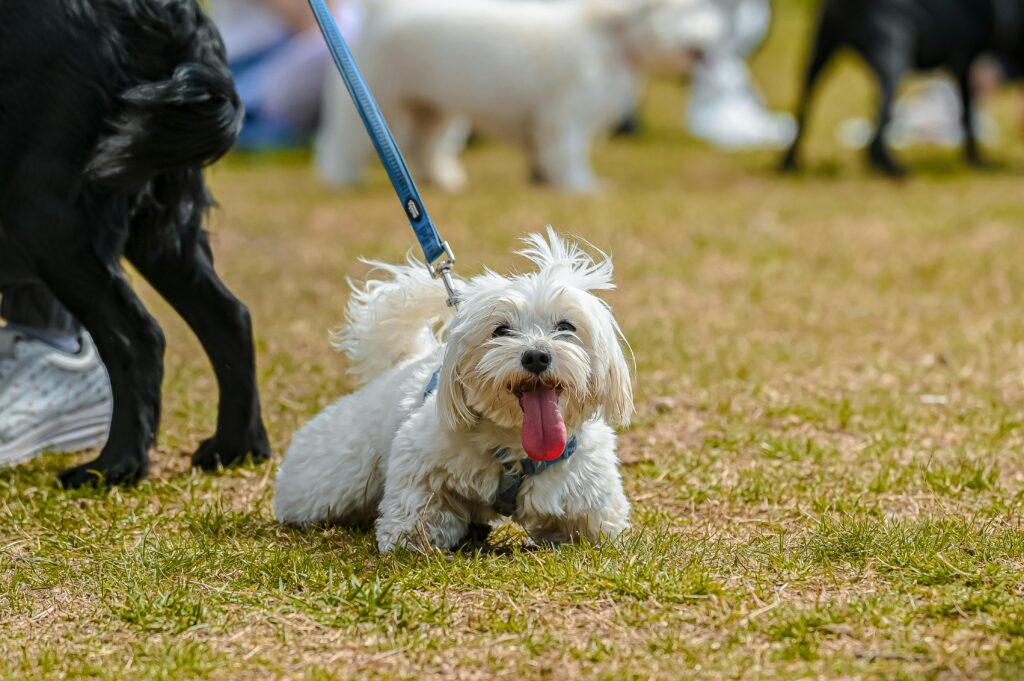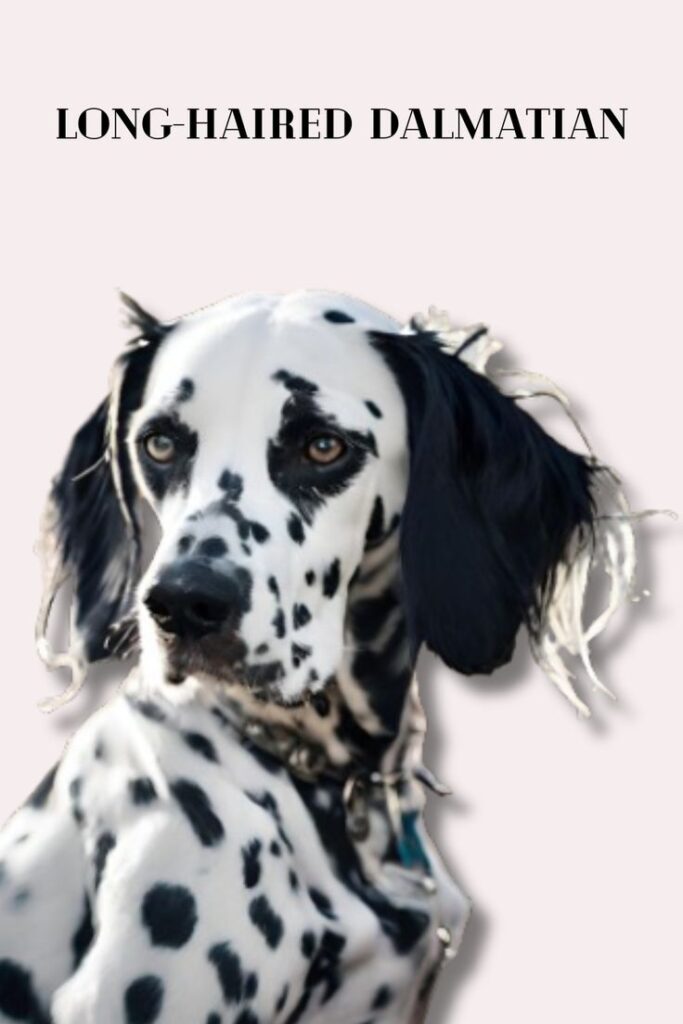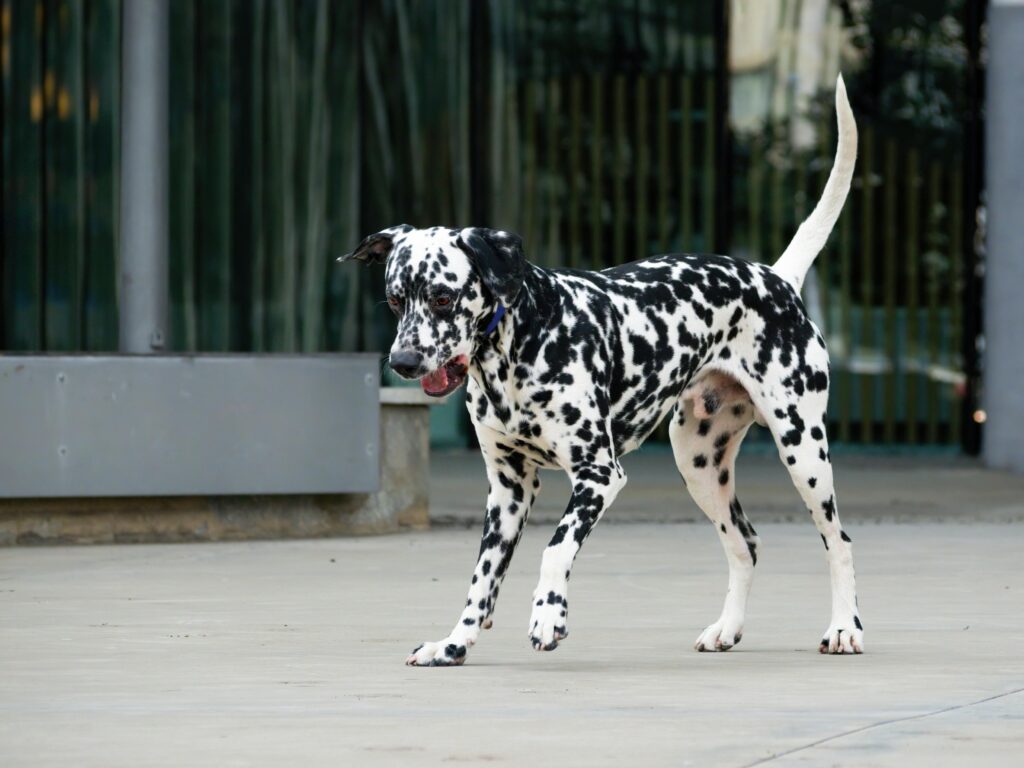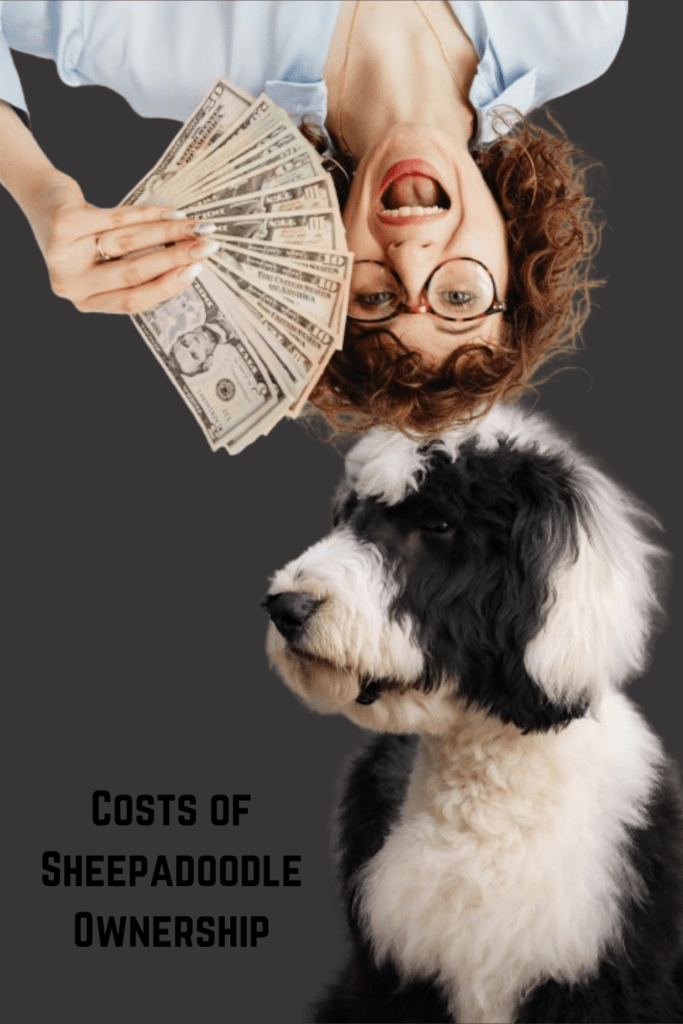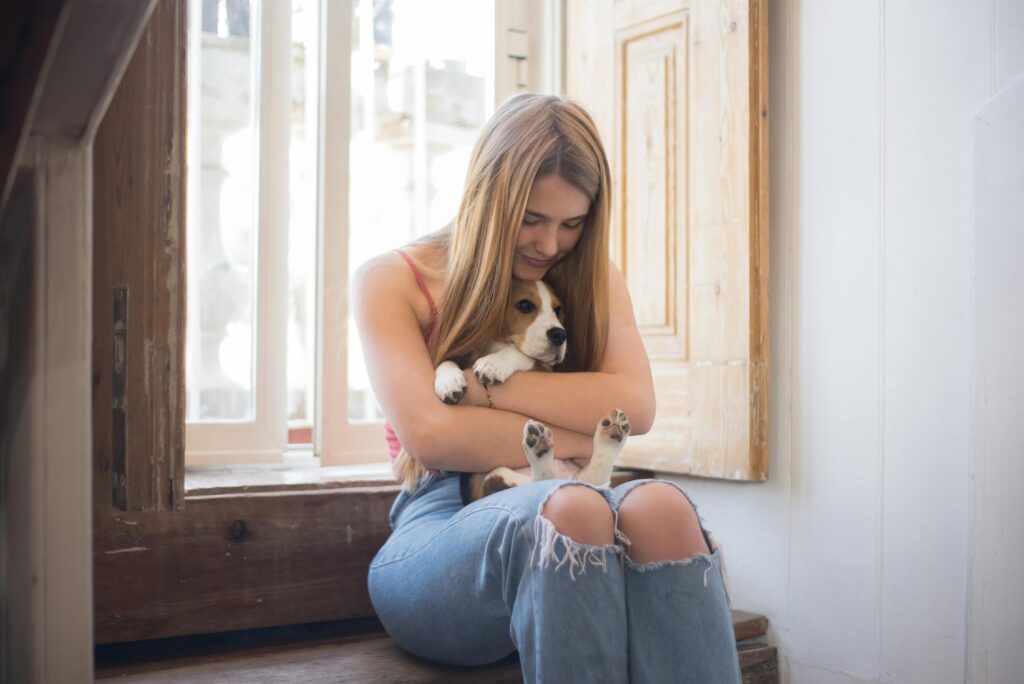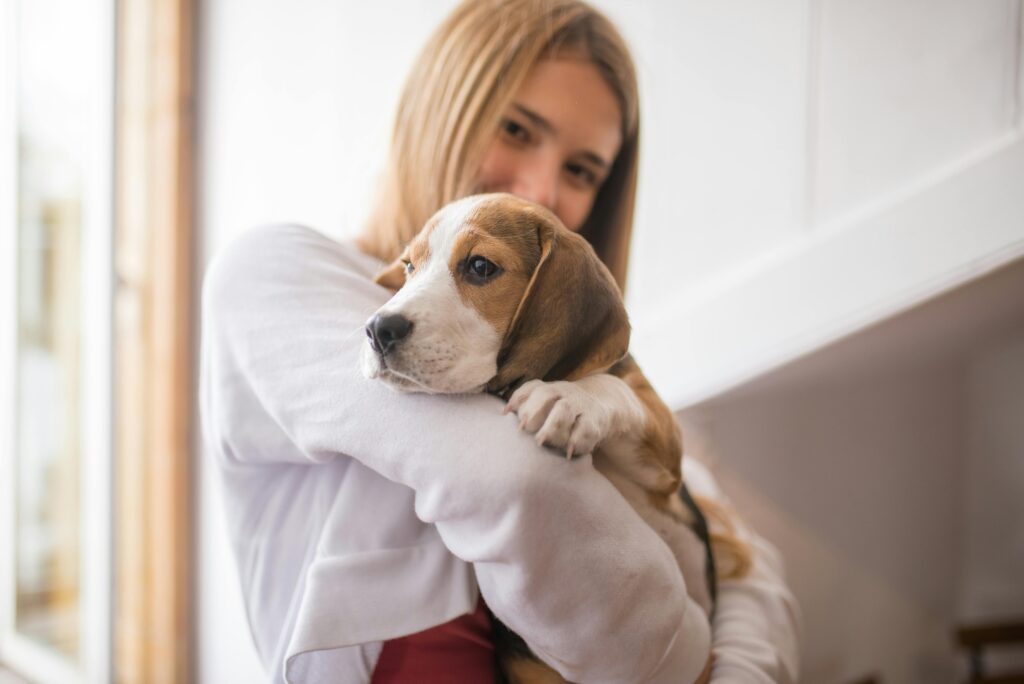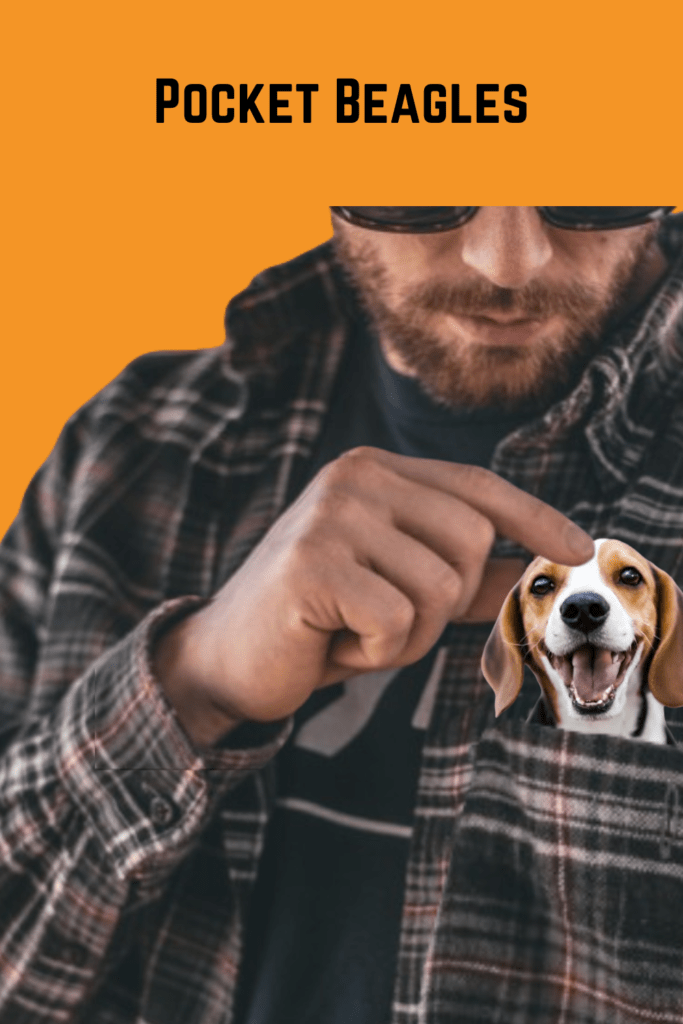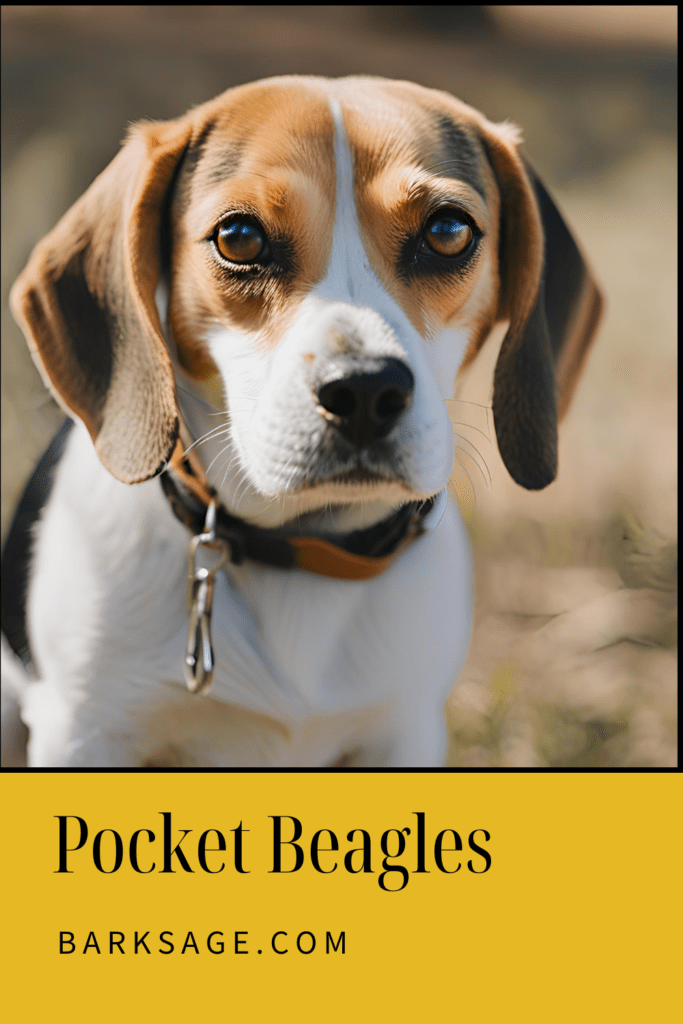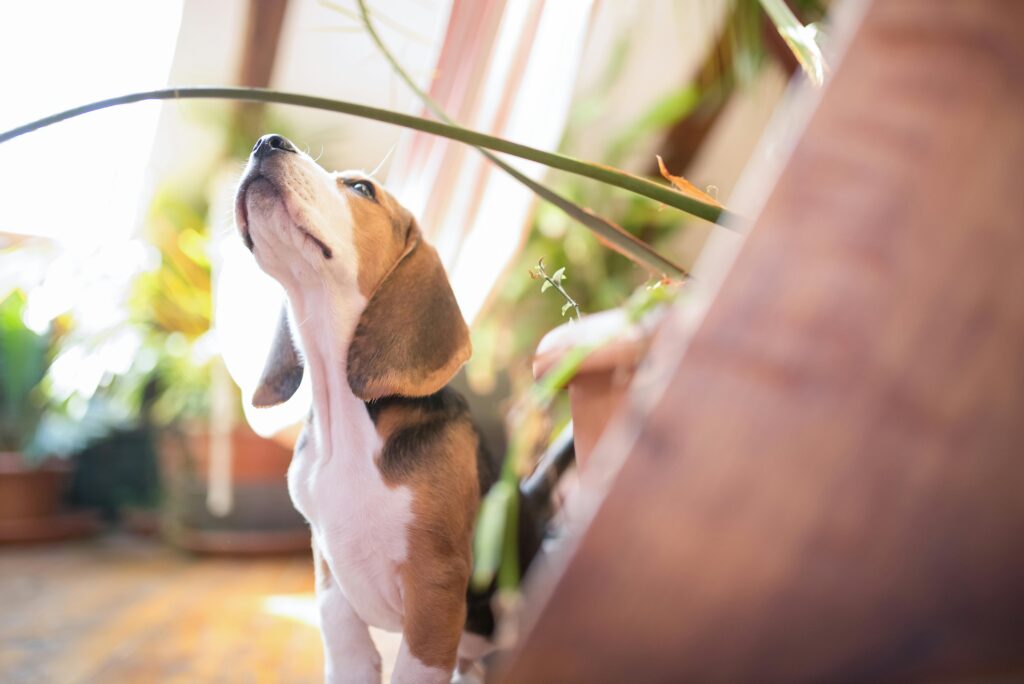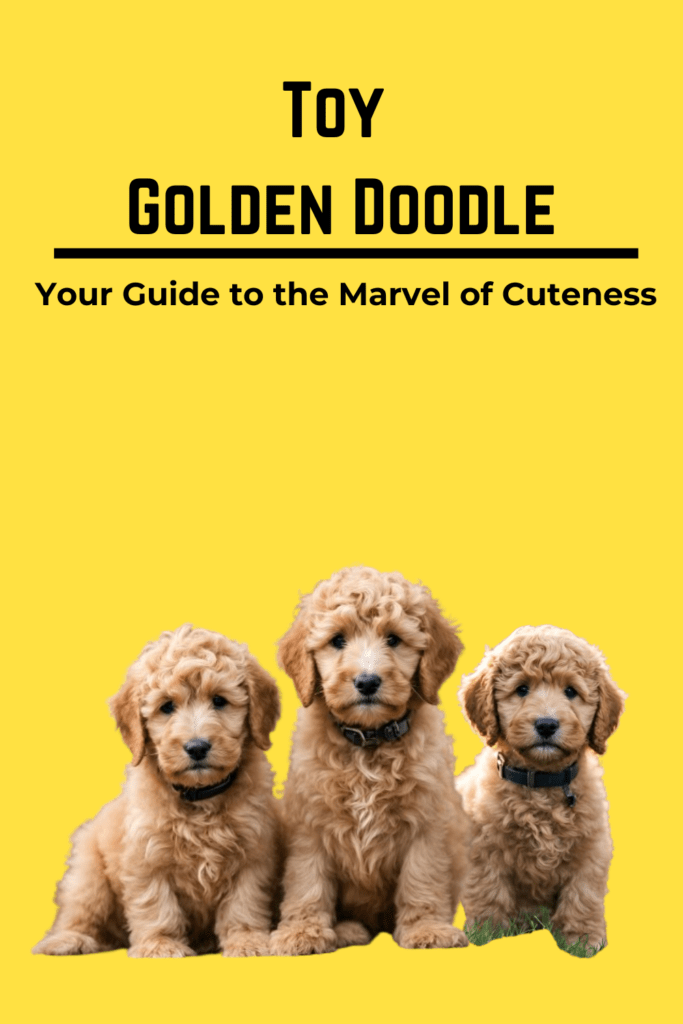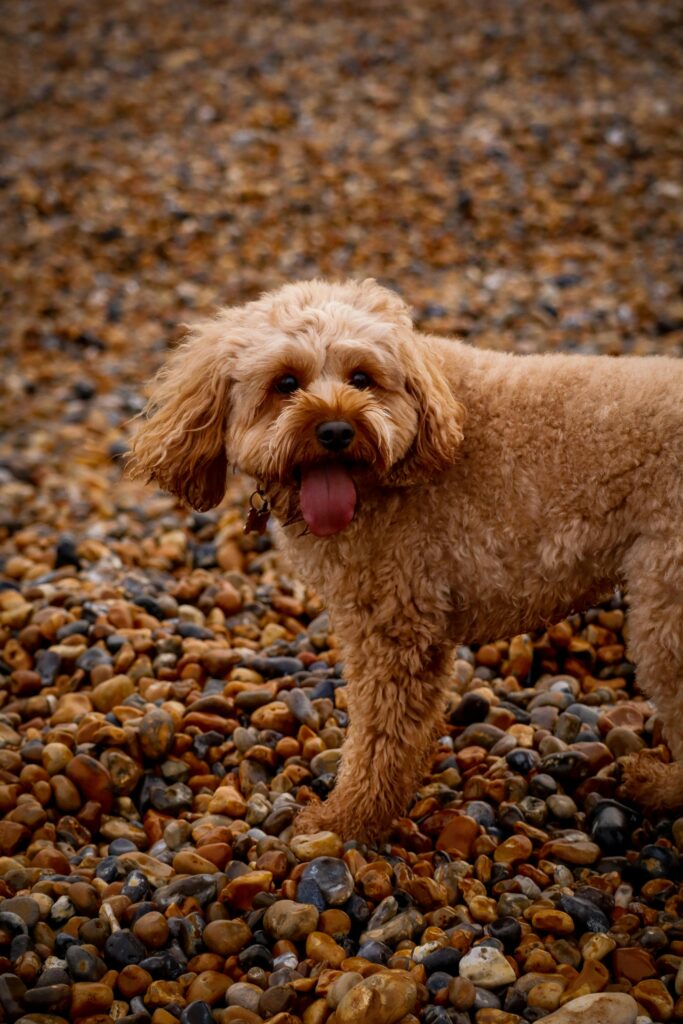The Double Labradoodles: Amazing Dog Breed Complete Guide 2024
Introduction
The enchanting world of Double Labradoodles, where the magic of genetics combines to create a truly unique canine companion. Join us, we’ll unravel the mysteries of Double Labradoodles, exploring their origin, characteristics, and what makes them stand out in the world of designer dogs.
Decoding the Double Labradoodle
Understanding the Genetics
The term “Double Labradoodle” typically refers to a dog that is the result of breeding two Labradoodles together. To understand the genetics of Double Labradoodles, it’s important to know the basics of Labradoodle breeding and the potential outcomes when two Labradoodles are mated.
Labradoodle Genetics:
Labradoodles are a hybrid breed resulting from the crossbreeding of Labrador Retrievers and Poodles. The goal is to combine the desirable traits of both parent breeds, including the Poodle’s hypoallergenic coat and the Labrador Retriever’s friendly temperament.
Characteristics and Temperament
The characteristics and temperament of Double Labradoodles, or F2 Labradoodles, can vary widely due to the diverse genetic backgrounds resulting from Labradoodle-to-Labradoodle breeding. However, there are general traits that are commonly associated with Labradoodles, and these may be exhibited in Double Labradoodles:
- Coat Types:
- Double Labradoodles can have various coat types, including fleece, wool, or hair. The coat may be curly, wavy, or straight, and it can range in color and pattern. Some Labradoodles have a low-shedding or hypoallergenic coat. To learn more about the Labradoodle coat, check out this blog post: Are Labradoodles Hypoallergenic: Discover 10 Amazing Grooming Tips (Number 4 is the best)
- Size:
- The size of Double Labradoodles can vary, as it depends on the size of the parent Labradoodles. They can be medium-sized to large dogs.
- Intelligence:
- Labradoodles, in general, are known for their intelligence. This trait is often inherited from their Poodle ancestry. Double Labradoodles are quick learners and can excel in various training activities.
- Friendly and Sociable:
- Labradoodles are typically friendly, sociable, and outgoing. They often enjoy the company of their human family members and get along well with children and other pets.
- Energetic:
- Like their parent breeds, Labradoodles are energetic dogs. They benefit from regular exercise and enjoy outdoor activities. Daily walks, playtime, and mental stimulation are essential for their well-being.
- Adaptable:
- Labradoodles, including Double Labradoodles, are known for their adaptability. They can thrive in various living environments, including suburban homes or apartments, as long as they receive adequate exercise and attention.
- Playful and Enthusiastic:
- Labradoodles often retain a playful and enthusiastic demeanor throughout their lives. They enjoy interactive play and engaging with their owners in various activities.
- Affectionate:
- Labradoodles are affectionate dogs that form strong bonds with their human family members. They may seek attention, cuddle, and show signs of affection.
- Alertness:
- Labradoodles can exhibit a level of alertness and may act as good watchdogs. While they are not typically aggressive, their attentiveness makes them aware of their surroundings.
- Therapy and Assistance Work:
- Due to their friendly and gentle nature, some Labradoodles, including Double Labradoodles, are chosen for therapy and assistance work. They can provide comfort and support to individuals in various settings.
It’s important to note that individual dogs may vary in temperament, even within the same litter. Additionally, factors such as socialization, training, and the specific lineage of the Labradoodle can influence their behavior. If considering a Double Labradoodle, work with a reputable breeder who focuses on producing well-adjusted, healthy puppies and provides information on the temperament and health of the parent dogs.
Nutritional Needs
Dive into the dietary requirements of Double Labradoodles, understanding how their unique genetics may influence nutritional needs. Explore the best practices for feeding and maintaining a balanced diet to support their health and well-being. Learn about any specific considerations when it comes to the size, age, and energy levels of Double Labradoodles.
Caring for Double Labradoodles involves providing a balanced and nutritious diet to support their overall health and well-being. Here are some guidelines for meeting the nutritional needs of your Double Labradoodle:
- High-Quality Dog Food:
- Choose a high-quality commercial dog food that is appropriate for your Double Labradoodle’s age, size, and activity level. Look for formulations that meet the nutritional standards set by reputable organizations.
- Protein Content:
- Labradoodles are active dogs that benefit from a diet with adequate protein content. Look for dog foods with high-quality protein sources, such as meat or fish. Protein is essential for muscle development and overall body function.
- Balanced Diet:
- Ensure a balanced diet that includes a mix of proteins, carbohydrates, fats, vitamins, and minerals. A well-rounded diet supports your dog’s energy needs and promotes overall health.
- Avoid Fillers:
- Choose dog foods that avoid excessive fillers, artificial additives, and preservatives. Look for brands that prioritize natural and wholesome ingredients.
- Feeding Schedule:
- Establish a regular feeding schedule with set meal times. This helps regulate your Double Labradoodle’s digestion and can also assist in house training. Consult with your veterinarian to determine the appropriate portion sizes for each meal.
- Monitor Weight:
- Regularly monitor your dog’s weight and adjust their food intake as needed. Labradoodles can be prone to weight gain, so maintaining a healthy weight is crucial for their overall well-being.
- Fresh Water:
- Always provide access to fresh, clean water. Hydration is essential for your Double Labradoodle’s overall health, and it helps support various bodily functions.
- Consider Special Dietary Needs:
- If your Double Labradoodle has specific health concerns or dietary restrictions, consult with your veterinarian to determine the most suitable diet. Some dogs may require specialized diets based on allergies, sensitivities, or medical conditions.
- Avoid Human Foods:
- Refrain from feeding your Double Labradoodle human foods that may be harmful, including those that are toxic to dogs such as chocolate, onions, grapes, and certain artificial sweeteners.
- Consult with Your Veterinarian:
- Regularly consult with your veterinarian to assess your dog’s nutritional needs. They can provide guidance on the right type and amount of food based on your Double Labradoodle’s individual requirements.
It’s important to tailor your dog’s diet to their specific needs, taking into account factors such as age, activity level, and any underlying health conditions. If you have concerns about your Double Labradoodle’s diet or nutritional requirements, seek advice from your veterinarian, who can provide personalized recommendations based on your dog’s individual needs.
Grooming Tips and Tricks
Navigate the grooming needs of Double Labradoodles, considering their unique coat types and textures. From curly to wavy coats, discover the grooming routines that keep these dogs looking their best. Learn about the tools and techniques that make grooming a joy for both owners and their Double Labradoodle companions.
Double Labradoodles, a crossbreed between two Labradoodles, can have a variety of coat types, typically ranging from curly to wavy. Each coat type has distinct grooming needs to keep the dog healthy, comfortable, and looking their best. Here’s a guide to navigate the grooming requirements for Double Labradoodles:
1. Understanding Coat Types
Curly Coat:
- Resembles the Poodle’s coat.
- Tends to be dense, with tight curls.
- Requires more frequent grooming to prevent matting.
Wavy Coat:
- A mix between the Labrador Retriever’s straight coat and the Poodle’s curly coat.
- Less prone to matting compared to curly coats but still needs regular maintenance.
2. Grooming Routines
Curly Coats:
- Brushing: Daily brushing is essential to prevent mats and tangles. Use a slicker brush and follow with a comb to ensure all knots are removed.
- Bathing: Bathe every 4-6 weeks with a dog-specific shampoo. Be sure to thoroughly rinse out all shampoo to avoid skin irritation.
- Trimming: Regular trimming every 6-8 weeks is recommended. Professional grooming may be needed to maintain a tidy and manageable length.
- Ear Cleaning: Regularly check and clean the ears to prevent infections, as curly coats can trap moisture and debris.
Wavy Coats:
- Brushing: Brush at least 2-3 times a week. A pin brush is effective for wavy coats, followed by a comb to check for any hidden tangles.
- Bathing: Bathe every 6-8 weeks. Wavy coats are less prone to matting but still need proper cleansing.
- Trimming: Trimming every 8-10 weeks helps maintain coat health and appearance. Focus on areas prone to matting, such as behind the ears and under the legs.
- Ear Cleaning: Regular ear cleaning is also necessary for wavy-coated Double Labradoodles to prevent infections.
3. Tools and Techniques
Essential Tools:
- Slicker Brush: Ideal for removing loose hair and detangling curly coats.
- Pin Brush: Best for wavy coats, helping to remove dirt and distribute natural oils.
- Comb: A metal comb with wide and narrow teeth for thorough detangling and checking for mats.
- Grooming Scissors and Clippers: For trimming and maintaining coat length.
- Dog-Specific Shampoo and Conditioner: Keep the coat clean and healthy without stripping natural oils.
- Ear Cleaner: A gentle solution to keep ears clean and infection-free.
Techniques:
- Brushing: Always start from the base of the hair and work your way up to avoid pulling on the coat. Be gentle to prevent causing discomfort.
- Bathing: Use lukewarm water and be thorough but gentle when massaging the shampoo into the coat. Rinse completely to prevent any residue.
- Drying: Use a towel to remove excess water, followed by a blow dryer on a low heat setting. Ensure the coat is completely dry to prevent mildew and odors.
- Trimming: For at-home trims, ensure you are familiar with the basics of dog grooming. Otherwise, consider professional grooming services.
4. Professional Grooming
While regular at-home grooming is essential, professional grooming every 6-8 weeks ensures that your Double Labradoodle’s coat is maintained at a high standard. Professionals can also check for skin issues, trim nails, and provide a thorough cleaning that may be challenging at home.
Conclusion
By understanding the specific grooming needs of curly and wavy-coated Double Labradoodles, you can maintain their health and appearance. Regular grooming, proper tools, and techniques will make the process enjoyable for both you and your furry friend, ensuring they look their best all year round.
Living with a Double Labradoodle
Exercise and Mental Stimulation
Explore the exercise requirements of Double Labradoodles, recognizing the importance of both physical and mental stimulation. Learn about activities and games that cater to their intelligence and playfulness. Understand how providing the right outlets for energy contributes to a happy and well-adjusted Double Labradoodle.
Double Labradoodles, being a mix of the intelligent Poodle and the energetic Labrador Retriever, require ample exercise to keep them physically fit and mentally stimulated. Meeting their exercise needs is crucial for their overall well-being and helps prevent behavioral issues that can arise from boredom or pent-up energy.
Physical Exercise Requirements
Daily Exercise:
- Time Commitment: Double Labradoodles need at least 60-90 minutes of exercise per day.
- Walks and Runs: Daily walks or runs are essential. Varying the route can provide new sights and smells, which adds mental stimulation.
- Off-Leash Play: If possible, allow off-leash play in a safe, enclosed area. Dog parks or large, fenced yards are ideal for letting them run freely and play with other dogs.
High-Energy Activities:
- Fetch: A classic game that combines physical activity with mental engagement. Use a ball or a frisbee for variation.
- Agility Training: Set up an agility course in your yard or find a local facility. This challenges both their body and mind.
- Swimming: Many Double Labradoodles love water. Swimming is a low-impact exercise that’s great for joints and provides a full-body workout.
Mental Stimulation
Interactive Toys:
- Puzzle Toys: Toys that dispense treats when manipulated can keep a Double Labradoodle engaged and mentally stimulated.
- Chew Toys: Durable chew toys help satisfy their natural chewing instinct and provide mental stimulation.
Training Sessions:
- Obedience Training: Regular training sessions reinforce good behavior and keep their minds sharp. Teaching new commands or tricks can be particularly rewarding.
- Scent Work: Games that involve finding hidden treats or toys using their sense of smell tap into their natural abilities and keep them mentally active.
Socialization:
- Playdates: Organize playdates with other dogs. Social interaction is crucial for mental well-being and helps burn off energy.
- Doggy Daycare: If you have a busy schedule, consider doggy daycare for social interaction and supervised playtime.
Activities and Games
Structured Games:
- Hide and Seek: Hide treats or toys around the house or yard and encourage your dog to find them.
- Tug of War: This game can be physically demanding and mentally stimulating, but ensure it’s played in a controlled manner.
Unstructured Play:
- Exploratory Walks: Allow your dog to lead the way (safely) on a walk, letting them sniff and explore their environment.
- Interactive Play: Spend time each day engaging in play with your dog, such as chasing or playing with toys together.
Importance of Balanced Exercise
Physical Benefits:
- Regular exercise helps maintain a healthy weight, promotes cardiovascular health, and strengthens muscles and joints.
Mental Benefits:
- Mental stimulation prevents boredom, reduces anxiety, and promotes a happier, more relaxed dog.
Behavioral Benefits:
- Adequate exercise reduces the likelihood of destructive behaviors, such as chewing or digging, that often stem from excess energy and boredom.
Conclusion
Providing Double Labradoodles with a balanced mix of physical exercise and mental stimulation is key to their happiness and well-being. By incorporating a variety of activities and games into their daily routine, you can ensure that your Double Labradoodle remains a healthy, happy, and well-adjusted companion. Regular interaction and engagement not only strengthen the bond between you and your dog but also contribute to a fulfilling and joyful life for your furry friend.
Training Strategies
Delve into effective training strategies for Double Labradoodles, considering their intelligence and eagerness to please. Uncover tips for positive reinforcement and building a strong bond with your Double Labradoodle through training. Explore any unique challenges or considerations that may arise in the training process.
Training Double Labradoodles can be a rewarding experience due to their intelligence and eagerness to please. However, their energy and curiosity can present unique challenges. Here are effective training strategies, tips for positive reinforcement, and insights into building a strong bond with your Double Labradoodle.
Effective Training Strategies
Start Early:
- Begin Training as Puppies: Early socialization and basic obedience training are crucial. Puppies are more adaptable and open to learning new behaviors.
Consistency is Key:
- Routine: Establish a consistent training schedule. Use the same commands and reward systems to avoid confusion.
- Clear Commands: Use clear, simple commands. Double Labradoodles respond well to consistency in language and actions.
Short, Frequent Sessions:
- Keep it Short: Training sessions should be 5-10 minutes long, especially for puppies. Frequent, short sessions are more effective than longer, infrequent ones.
- Variety: Mix up the training exercises to keep them engaged and prevent boredom.
Positive Reinforcement
Reward-Based Training:
- Treats and Praise: Use treats, praise, and affection as rewards. Immediate rewards help reinforce positive behavior.
- Clicker Training: A clicker can mark the exact moment your dog performs the desired behavior, followed by a treat. This method helps with precision in training.
Patience and Positivity:
- Stay Calm: Keep a calm, positive demeanor during training. Dogs can sense frustration and may become stressed.
- Avoid Punishment: Avoid negative reinforcement or punishment. Focus on redirecting unwanted behaviors and rewarding positive ones.
Building a Strong Bond
Interactive Play:
- Bond Through Play: Incorporate training into playtime. Games like fetch or tug-of-war can include commands like “sit,” “stay,” or “drop it.”
- Engage with Toys: Use interactive toys that challenge their intelligence and problem-solving skills.
Daily Interaction:
- Quality Time: Spend quality time with your Double Labradoodle outside of training. Daily walks, play sessions, and cuddles strengthen your bond.
- Communication: Pay attention to your dog’s body language and signals. Understanding their cues enhances your relationship and training effectiveness.
Unique Challenges and Considerations
High Energy Levels:
- Burn Off Energy: Ensure they get enough physical exercise before training sessions. A well-exercised dog is more focused and receptive.
- Mental Stimulation: Provide puzzles and interactive toys to keep their minds engaged.
Curiosity and Distractibility:
- Minimize Distractions: Start training in a quiet, familiar environment. Gradually introduce more distractions as they progress.
- Leash Training: Use a leash during outdoor training to maintain control and focus.
Socialization:
- Early Socialization: Expose your Double Labradoodle to various people, places, and other animals from an early age to prevent fearfulness and aggression.
- Controlled Introductions: Introduce new experiences gradually and positively to build their confidence.
Advanced Training Techniques
Obedience Classes:
- Group Classes: Enroll in obedience classes to provide structured learning and socialization with other dogs.
- One-on-One Training: Consider professional trainers for personalized attention and addressing specific behavior issues.
Agility and Advanced Commands:
- Agility Training: Engage their intelligence and energy with agility training, which provides both physical and mental stimulation.
- Advanced Tricks: Teach advanced tricks and commands to challenge their intellect and keep training interesting.
Conclusion
Training a Double Labradoodle effectively requires a blend of consistency, positive reinforcement, and understanding their unique characteristics. By incorporating these strategies, you can harness their intelligence and eagerness to please, fostering a well-behaved and happy companion. Building a strong bond through interactive play and daily interaction will enhance the training experience and contribute to a fulfilling relationship with your Double Labradoodle.
Conclusion
As we conclude our exploration of Double Labradoodles, we invite you to share your thoughts, experiences, and questions in the comments below. Whether you’re considering adding a Double Labradoodle to your family or you’re already a proud owner, your insights contribute to the collective knowledge and appreciation of these unique canine companions. Let’s continue celebrating the enchanting world of Double Labradoodles together!

